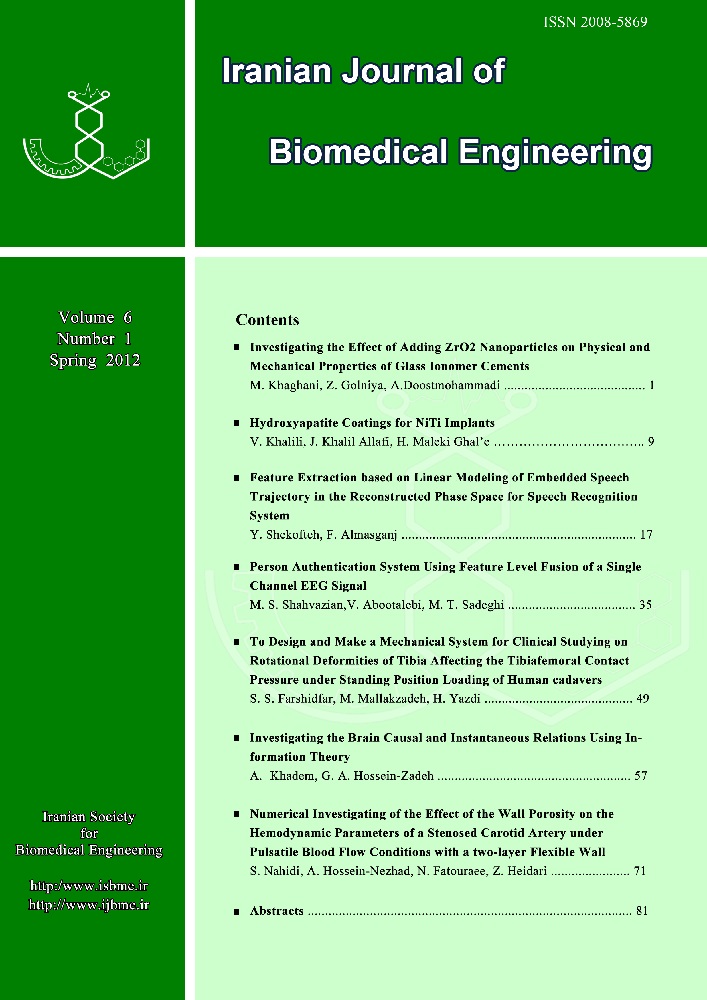Document Type : Full Research Paper
Authors
1 M.Sc, Department of Mechanical Engineering, University of Sistan and Baluchestan
2 Associate Professor, Department of Mechanical Engineering, University of Sistan and Baluchestan
3 Associate Professor, Biological Fluid Mechanics Research Laboratory, Biomedical Engineering Faculty, Amirkabir University of Technology
4 Professor, Division of Histology, Faculty of Medicine, Zahedan University of Medical Sciences and Health Services, Zahedan, Sistan and Baluchestan
Abstract
Hemodynamic parameters are always affected by stenosis severity of arterial and these parameters in their turn have influence on the development of atherosclerosis. In this paper, By considering three different stenosis severity, the effects of wall porosity assumption on the hemodynamic parameters of a stenosed artery with a two-layer flexible wall (intima-media, adventitia), in which inner layer (intima-media) assumed porous, is numerically investigated, using Porous Fluid Structure Interaction (PFSI) model. Blood is assumed as an incompressible non-Newtonian fluid with pulsatile flow condition. In this investigation, the results show that the permeability assumption has much influenced on the hemodynamic characteristics so that the comparison of the results using PFSI with those of a non-porous model show 6% decrease in shear stress, 30% increase in displacement and more than 72% increase in effective stress in the porous layer.
Keywords
- Porous Fluid Structure Interaction (PFSI)
- Hemodynamic Parameters
- Infiltration
- wall porosity
- stenosis arterial
- Atherosclerosis
Main Subjects

